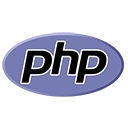Data validation is a crucial step in web development to ensure the security and integrity of user-submitted data. In this guide, we'll explore PHP data validation techniques, focusing on sanitizing and filtering input:
1. Input Validation vs. Sanitization
Input validation checks whether data adheres to specified rules (e.g., a valid email address format), while sanitization cleans and formats data to remove potentially harmful content (e.g., removing HTML tags).
2. Filter Functions
PHP provides filter functions to validate and sanitize data. These functions are a convenient way to perform common data checks. Examples include:
// Validate an email address
$email = filter_var($userInput, FILTER_VALIDATE_EMAIL);
// Sanitize a string by removing HTML tags
$cleanedString = filter_var($dirtyString, FILTER_SANITIZE_STRING);
3. Input Validation
Use filter functions to validate different types of input, such as emails, URLs, and integers. For example:
// Validate an integer within a specific range
$age = filter_var($userInput, FILTER_VALIDATE_INT, ['options' => ['min_range' => 18, 'max_range' => 99]]);
4. Sanitization
Sanitize data to remove potentially dangerous content, especially for user-generated content displayed on web pages. Use functions like
filter_var()strip_tags() // Remove HTML tags
$cleanedText = strip_tags($userInput);
5. Custom Validation and Sanitization
For more complex or custom validation and sanitization, you can create your own functions. These functions allow you to define specific rules and logic tailored to your application's needs.
// Custom email validation
function customEmailValidation($email) {
// Your validation logic here
return true; // Valid email
}
6. Validation with Regular Expressions
Regular expressions (regex) are powerful tools for data validation. You can define intricate patterns for data matching. For example, validating an email address using regex:
if (preg_match('/^[\w-]+(\.[\w-]+)*@[\w-]+(\.[\w-]+)+$/', $userInput)) {
// Valid email address
}
7. Prepared Statements for Database Input
When dealing with database queries, use prepared statements to separate data from SQL queries. This helps prevent SQL injection and is a critical form of data validation for database operations.
8. Escaping and Output Sanitization
When outputting data to web pages, use escaping functions like
htmlspecialchars() echo htmlspecialchars($userInput, ENT_QUOTES, 'UTF-8');
9. Importance of Security
Proper data validation and sanitization are essential for web application security. Failing to validate or sanitize user input can lead to vulnerabilities such as SQL injection, XSS attacks, and data corruption.
10. Continuous Monitoring
Security threats evolve over time. Stay up-to-date with the latest security best practices and vulnerabilities, and regularly audit and update your data validation and sanitization methods.
Conclusion
Data validation and sanitization are fundamental aspects of web development. By using filter functions, regular expressions, and custom validation/sanitization methods, you can protect your application from security threats and ensure data integrity.

